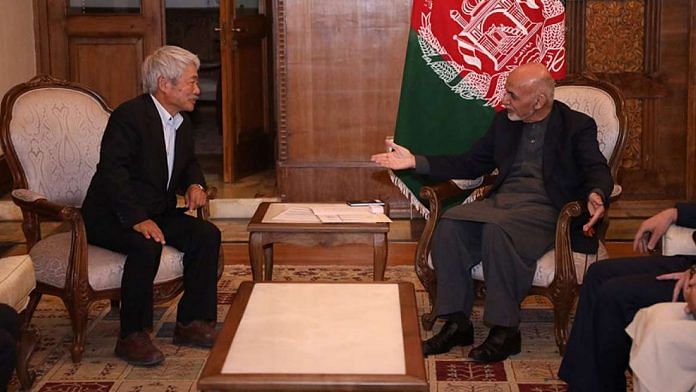New Delhi: The death of a Japanese doctor who helped lakhs of Afghans gain access to clean water drew pained reactions and tributes from across the country this week. Dr Tetsu Nakamura, who had been in Afghanistan since the 1980s, was killed in a terror strike at Jalalabad Wednesday.
No one has claimed responsibility for the attack so far, with the Taliban denying any role in the killing.
KamAir’s tribute to Dr Nakamura (completed today). pic.twitter.com/3asXv3LHpH
— Saad Mohseni (@saadmohseni) December 6, 2019
A number of #Afghan civil society activists, held a vigil for Japanese aid worker Dr. #Nakamura outside Japanese embassy in #Kabul who was killed along with his five colleagues in Jalalabad on Wednesday pic.twitter.com/bmE59M6Abt
— Hamid Shalizi (@HamidShalizi) December 5, 2019
“He dedicated his life to helping and cooperating with our people,” spokesman Sediq Seddiqi said.
Also read: Trump makes surprise visit to Afghanistan, says peace talks with Taliban have resumed
‘Sorry we couldn’t save you’
Nakamura, a Magsaysay awardee, was given honorary citizenship of Afghanistan this October for his exemplary services to the nation. He was the first foreigner to receive an honorary Afghan citizenship.
Expressing his condolences to the doctor’s family, President Ghani said Friday that a state funeral would be held for him.
This evening, President Ghani recieved Dr. Nakamura's family in ARG. He also announced to hold a "state funeral for Dr. Nakamura tomorrow." pic.twitter.com/n62tzxJbRb
— Fazel Fazly فضل فضلي (@FFazly) December 6, 2019
People across Afghanistan held candlelight vigils, carrying posters that read “Afghanistan has lost a real son and a true hero” and “Sorry we could not save you”.
‘Uncle Murad’
Japanese media described the attack on Nakamura as “well-planned”. An article in The Japan Times claimed that witnesses saw the doctor’s vehicle being ambushed near the spot where he was killed.
Fondly called ‘Uncle Murad’ by many Afghans, Nakamura had come to the country in the 1980s to treat leprosy patients. But he soon realised that it wasn’t leprosy but a lack of clean water that was a bigger concern among Afghans.
His organisation, Peace Japan Medical Services, soon began building bore wells and, in the 2000s, started digging canals using traditional Japanese methods for bringing water to parched areas. Nearly 40,000 acres of land were irrigated by this network of canals in the subsequent years.
He is also credited with transforming a vast desert stretch to lush forests and wheat farmlands in the Nangarhar Province of Afghanistan.
(Edited by Myithili Hazarika)



